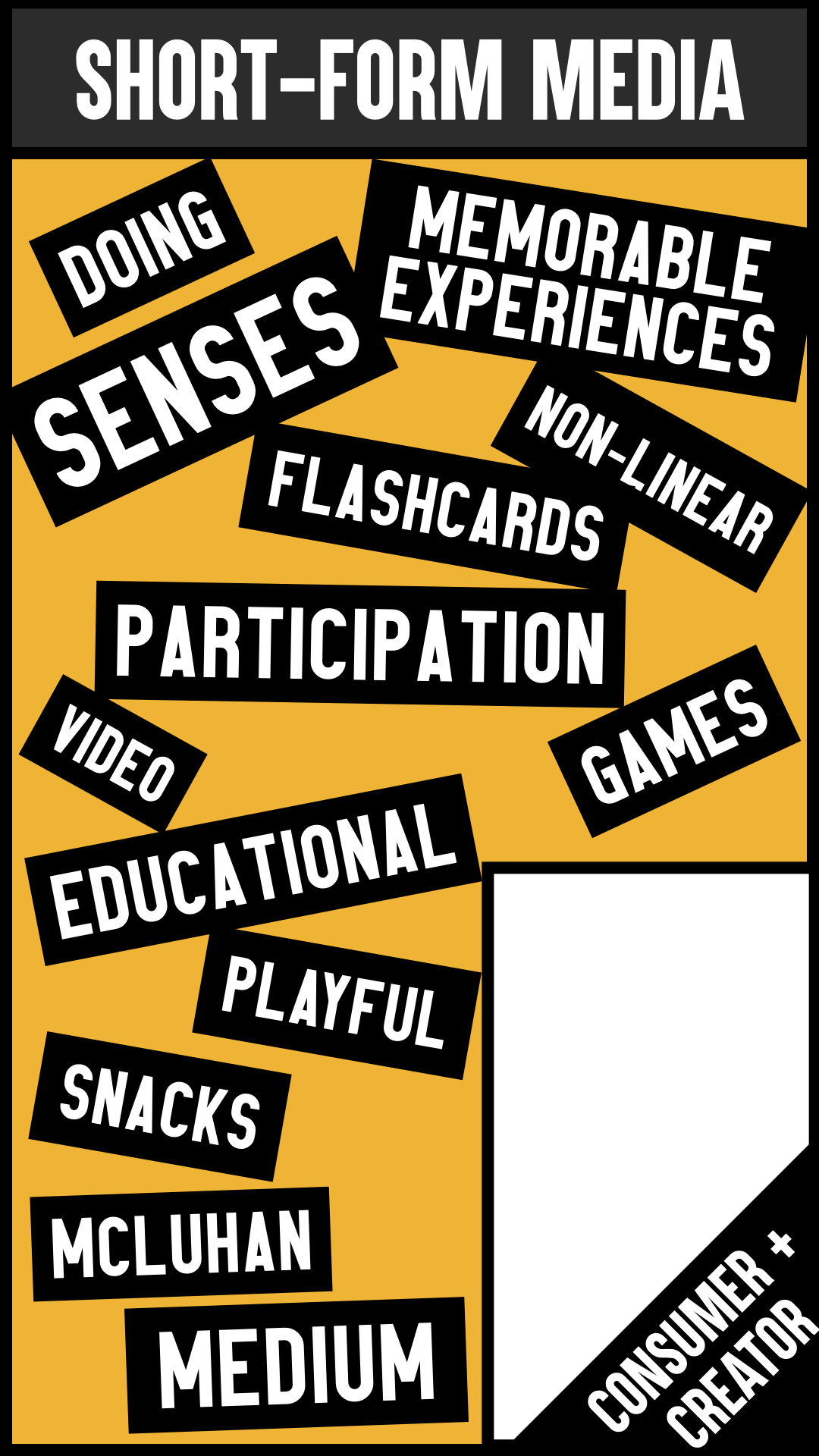The Power of Short: A Deep Dive into Short-Form Media

In the age of information overload, attention spans are shrinking and content creators are scrambling to keep up. This has led to the rise of short-form media – bite-sized pieces of information or entertainment that can be consumed quickly and easily. But what exactly is a medium, and how does short-form content fit into the grand scheme of communication?
Part 2 of a 5 part video series on the drivers of card deck industry growth.
What is a Medium?
A medium, in the context of communication, is the format through which content is delivered. It's the "how" in the equation of information exchange. Think of it as the container that holds your message. Books, movies, music, and even video games are all examples of different formats. Each medium has its own strengths and weaknesses, making it suitable for different types of content.
Historically, short-form media has always existed. Cave paintings, spoken word traditions, and early written communication were all concise ways to convey ideas. However, the printing press ushered in an era of "long-form," allowing for the creation of lengthy documents and complex narratives.
The Rise of Short-Form and the Power of Brevity
Technology has democratized content creation and fueled an explosion of information. This has led to a situation where there's simply too much content vying for our attention. As a result, the ability to capture attention quickly and deliver value in a short timeframe has become paramount.
Short-form media thrives in this environment. Platforms like Instagram and TikTok provide bite-sized pieces of entertainment, news snippets are condensed into headlines, and even food has been streamlined into pre-packaged meals.
Short-Form Doesn't Have to Be Shallow
Despite its concise nature, short-form media can be surprisingly powerful. Here are some reasons why:
- Accessibility: Short content is easier to access and consume, especially in our busy lives. It allows people to learn new things, be entertained, or stay informed even when they have limited time.
- Engagement: Short bursts of information are often more engaging than lengthy presentations. The quick pace keeps the audience hooked and wanting more.
- Memorable: Concise information is easier to remember and recall. Short-form content creators have to be very deliberate about the message they want to convey, making it more impactful.
- Variety: Short-form allows for a wide variety of content types, from educational videos to funny memes. This caters to different interests and learning styles.
Digital Decks: The Evolution of a Classic Medium
The concept of a deck as a medium predates the digital age. Flashcards are a prime example, offering a concise way to learn through repetition and organization. However, digital decks take this concept to a whole new level. They are:
- Non-linear and Randomizable: Information is not presented in a fixed sequence, allowing users to explore at their own pace.
- Tactile and Gamified: Digital decks can incorporate interactive elements, making learning more engaging and enjoyable.
- Snackable and Visually Appealing: The short-form nature of cards, coupled with visuals, makes it easy to consume information in small chunks.
- Versatile Containers: Digital decks can hold a wide variety of content, from educational courses to summaries of books.
- Memorable and Interactive: The act of selecting, reading, and engaging with cards creates a more memorable learning experience.
The Future of Short-Form Media
As technology continues to evolve, short-form media will likely become even more prevalent. We can expect to see even more innovative ways to create and consume content in bite-sized pieces. However, it’s important to remember that short-form doesn't have to replace long-form content altogether. Both formats have their place in our information-rich world. The key lies in understanding the strengths of each and choosing the best medium for the message you want to convey.
Conclusion
Short-form media is not just a fad; it's a reflection of how we consume information in the digital age. By understanding the power of brevity and the versatility of new formats like digital decks, creators can craft compelling content that resonates with a generation on the go. Whether it's a quick news update, a funny meme, or an educational flashcard, short-form media has the ability to inform, entertain, and educate in a way that is both efficient and engaging.